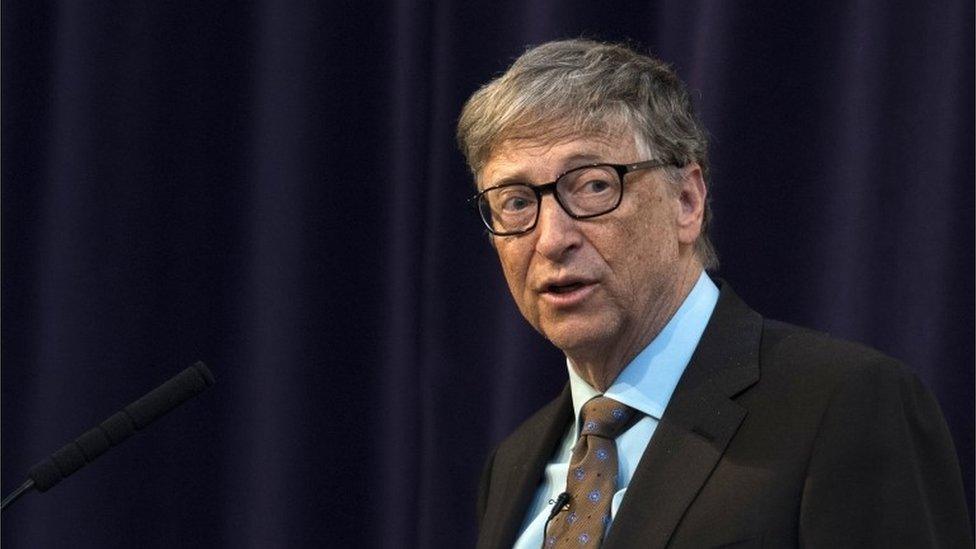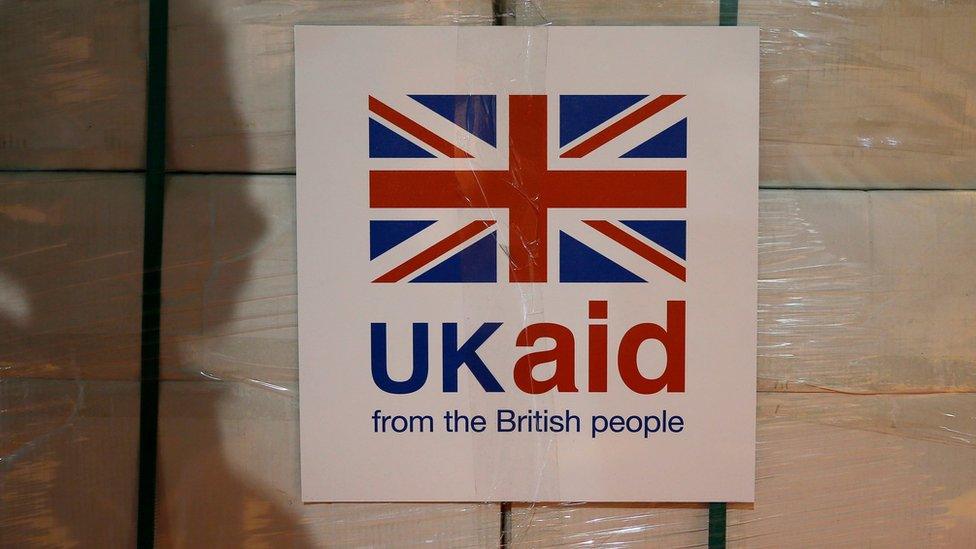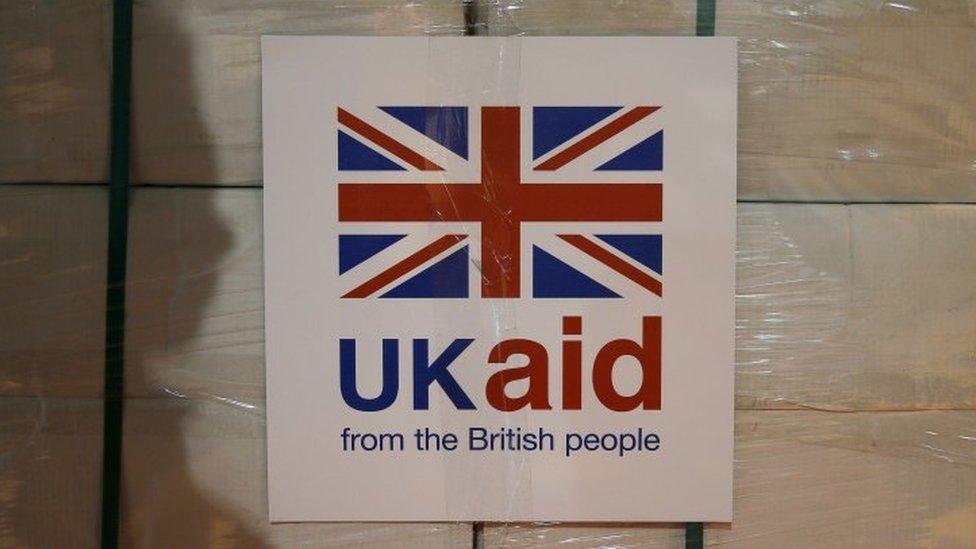Reality Check: How much does the UK spend on overseas aid?
- Published
The Microsoft founder Bill Gates has urged the UK to maintain its promise to spend 0.7% of national income on overseas aid.
He warned that reducing the commitment would cost lives.
But some Conservative MPs and newspapers have suggested that the figure is too high and should not be maintained after the election.
How much does the UK pay in overseas aid?
Under legislation approved in 2015, the UK government is legally required to spend 0.7% of gross national income (GNI) on overseas development assistance (ODA), popularly known as foreign aid.
In 2015, that translated to a total spend of £12.1bn, according to the Department for International Development. The provisional figure for 2016 is £13.3bn.
International summits since the 1970s have been urging wealthy countries to spend 0.7% of GNI on overseas aid. The target was also seen as an important way to help meet the UN's Millennium Development Goals. The UK first met the target on a voluntary basis in 2013, before it was made a legal requirement.
Where does the UK money go?
In 2015, 37% of UK overseas development assistance was delivered via international organisations and 63% was spent as bilateral aid sent directly to the countries concerned.
The top five country recipients of UK aid in 2015 were Pakistan, Ethiopia, Afghanistan, Nigeria and Syria.

It is also worth noting that about £1bn of the money the UK pays to the EU budget counts as part of the foreign aid budget.
The EU spends that money on humanitarian aid and on emergency responses to world crises, as well as on projects in countries close to the EU and those hoping to join in the future.
The Department for International Development (DfID) says UK aid goes to specific regions, countries and programmes or is pooled with other donors' money and spent by multilateral organisations.
Humanitarian projects received the largest proportion of aid in 2015.
To ensure value for money for the taxpayer, development programmes are subject to "rigorous checks and analysis", according to DfID, and projects can be tracked online.
What do political parties say about overseas aid?
The parties have not issued their election manifestos yet, but this is where they stand at the moment.
According to the government, this money is building "a safer, healthier, more prosperous world for people in developing countries and in the UK".
Earlier this year, Prime Minister Theresa May described the target as a "critical pillar" of the country's foreign policy.
The UK was one of only eight countries that hit the target of 0.7% of GNI in 2016.
However, the level of spending has long had its critics in Parliament and the press.
They say the amount that the UK spends on ODA is too large and that aid money has been wasted in recent years. While the Conservative government supports the target, several Tory backbenchers oppose it.
"This 0.7% means that important things at home like social care are struggling," according to Peter Bone MP., external
UKIP leader Paul Nuttall has called the size of the budget an "absolute outrage", saying money should be diverted to the NHS.
Labour is firmly committed to 0.7% - the aid budget doubled when the party was in power between 1997 and 2010.
Shadow international development secretary Kate Osamor has said potential cuts are "deeply alarming" and that the money is a "lifeblood for the indispensable work that aid agencies carry out".
The Liberal Democrats, Scottish National Party, Greens and Plaid Cymru are all supporters of the 0.7% figure.
Last month, Liberal Democrat leader Tim Farron said the Conservative Party has been taken over by "anti-immigrant, anti-refugee, anti-international aid zealots".
Which other countries meet the UN's 0.7% target?
According to the latest figures from the OECD, in 2016 two G7 countries met the target: the UK and, for the first time, Germany. The other countries that spent at least 0.7% were Sweden, Luxembourg, United Arab Emirates, Turkey, Denmark and Norway.
The Netherlands, which usually meets the target, dropped off the list in 2016.
By comparison, Russia spent 0.08% of its GNI on foreign aid.
In absolute terms, however, by far the largest annual amount of foreign aid is given by the United States, although that represents only 0.18% of its national income.
Update: On 21 April, the prime minister said there would be no cuts to the UK's foreign aid budget. This piece has also been updated to include the 2016 figures from the OECD.



- Published20 April 2017

- Published4 April 2017

- Published16 February 2017
